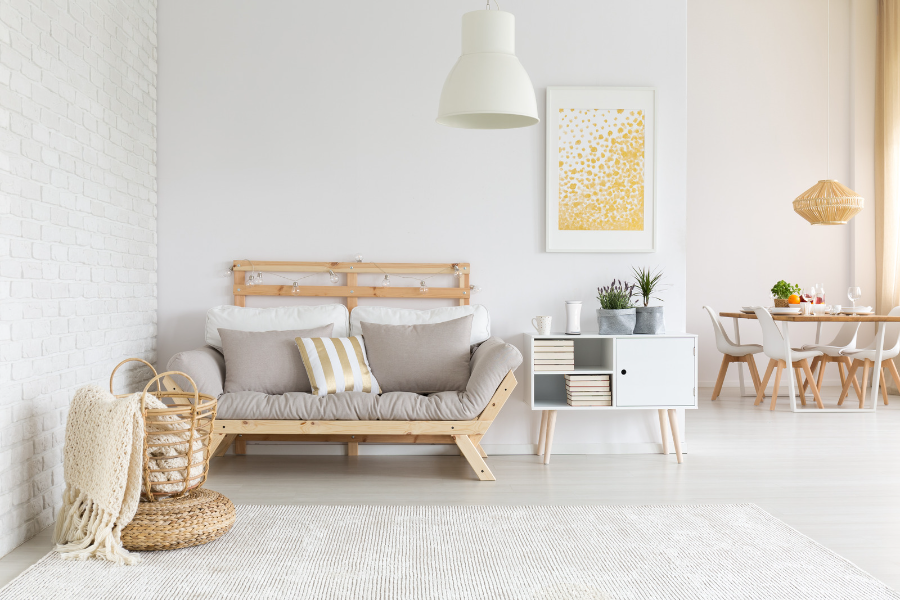
Your home should be a sanctuary, a place where you can relax and rejuvenate. One crucial aspect of creating a healthy and inviting environment is ensuring good air quality that meets indoor air quality guidelines. Following the proper protocols means breathing fresh air that’s free from indoor air pollutants.
Remember, prioritizing IAQ standards means you and your family will not only enjoy a clean environment but benefit health-wise since the air you breathe affects your well-being. Let’s explore practical tips to help you transform your living space into a healthy oasis by focusing on indoor air cleaning to create a breathable and refreshing home.
Let Fresh Air In: The Power of Ventilation
Proper ventilation is one of the primary indoor air quality strategies. It is key to maintaining good indoor air quality. Open windows and doors to allow fresh air to circulate regularly. Consider installing window vents or using exhaust fans in areas prone to moisture, like kitchens and bathrooms, to reduce the risk of mold growth. Embrace natural ventilation methods whenever possible to ensure a constant supply of clean, fresh air in your home.
Choose Low-Emission Materials for Cleaner Air
Many building materials and household products release volatile organic compounds (VOCs), which can negatively impact indoor air quality. When furnishing or renovating your home, opt for low-emission materials. Look for products labeled as “low VOC” or “zero VOC.” Choose natural alternatives like solid wood, bamboo, or cork for flooring and furniture. By making conscious choices, you can minimize indoor air pollution and reduce the presence of harmful chemicals in your living space.
Optimize Air Circulation for a Breath of Fresh Air
Creating a healthy oasis involves optimizing air circulation throughout your home. Ensure that air vents and registers are unobstructed, allowing air to flow freely. Use ceiling fans or portable fans strategically to promote air movement. You can also create cross-ventilation by opening windows on opposite sides of your home to create a refreshing breeze. Utilize this in conjunction with indoor air quality sensors. These simple techniques can enhance air circulation and improve overall air quality.
Keep It Clean: Maintain a Dust-Free Living Space
A clean living space contributes to better air quality. Regularly dust and vacuum your home to remove dust mites, pollen, and other allergens. Use microfiber cloths that trap dust effectively and minimize the use of chemical-laden cleaning products. Don’t forget to clean or replace air filters in your HVAC system regularly. Consider investing in IAQ products like a vacuum cleaner with a HEPA filter and an air purifier to efficiently capture small particles and improve air quality.
Nifty Tricks for a Creating a Healthy Space
Check out these simple IAQ solutions to help you create a clean environment. Use it with an IAQ sensor to check the results.
- Indoor Plants: Bring nature indoors by adding houseplants known for their air-purifying properties. Plants like snake plants, spider plants, and peace lilies can help filter harmful pollutants and increase oxygen levels.
- DIY Natural Air Fresheners: Say goodbye to synthetic air fresheners and create your own using natural ingredients. Simmer herbs and citrus peels on the stovetop, make potpourri with dried flowers and spices, or use essential oil diffusers to enjoy refreshing scents without harmful chemicals.
- Air-Purifying Bags: Place activated charcoal or bamboo charcoal bags in areas prone to odors or excess moisture. These natural air purifiers absorb pollutants and help maintain a fresh-smelling home.
Transforming your living space into a healthy oasis is within your reach. By following these tricks and cross-checking with an indoor air quality monitor like uHoo, you can create an environment that promotes well-being and relaxation. Embrace these practices and enjoy the benefits of a healthy home where you can breathe freely and rejuvenate your body and mind.
